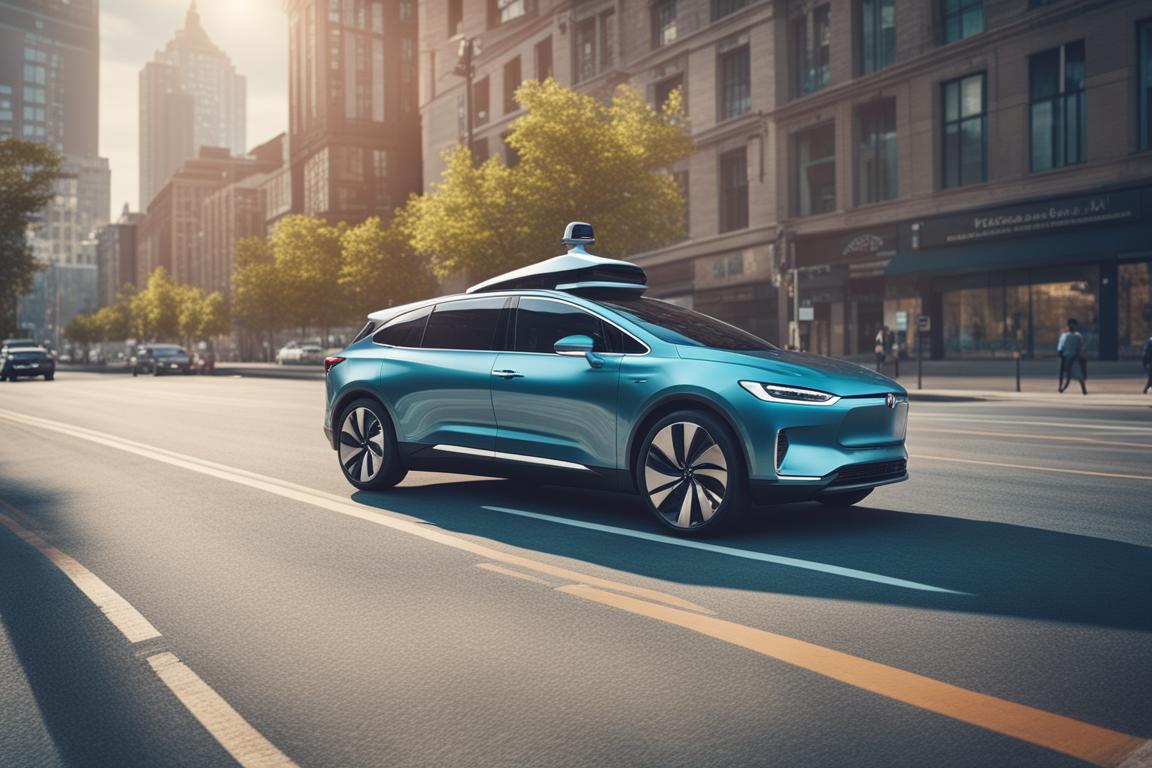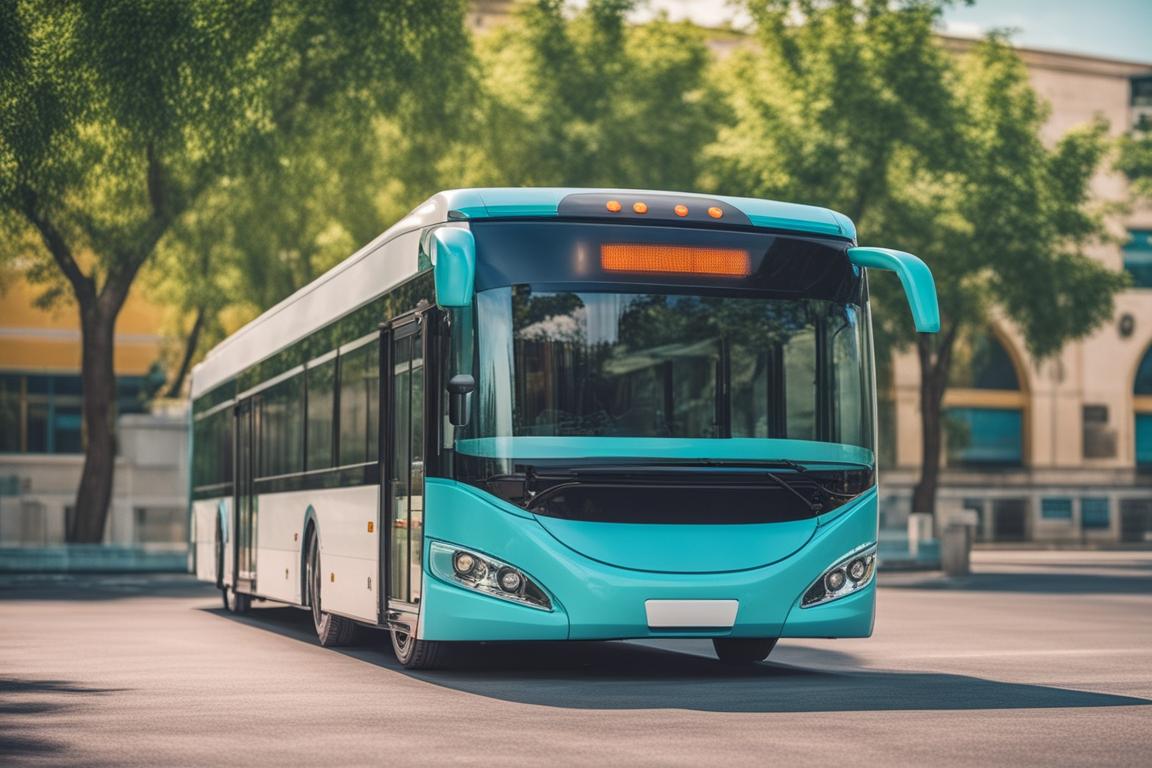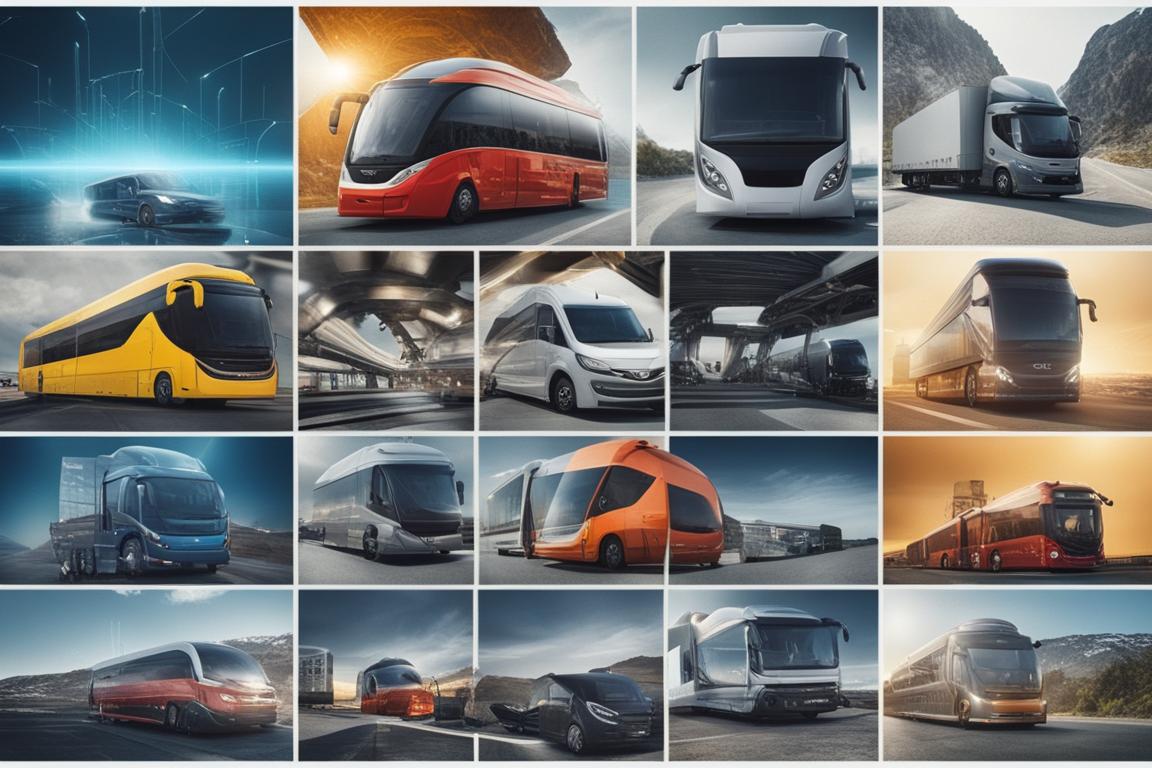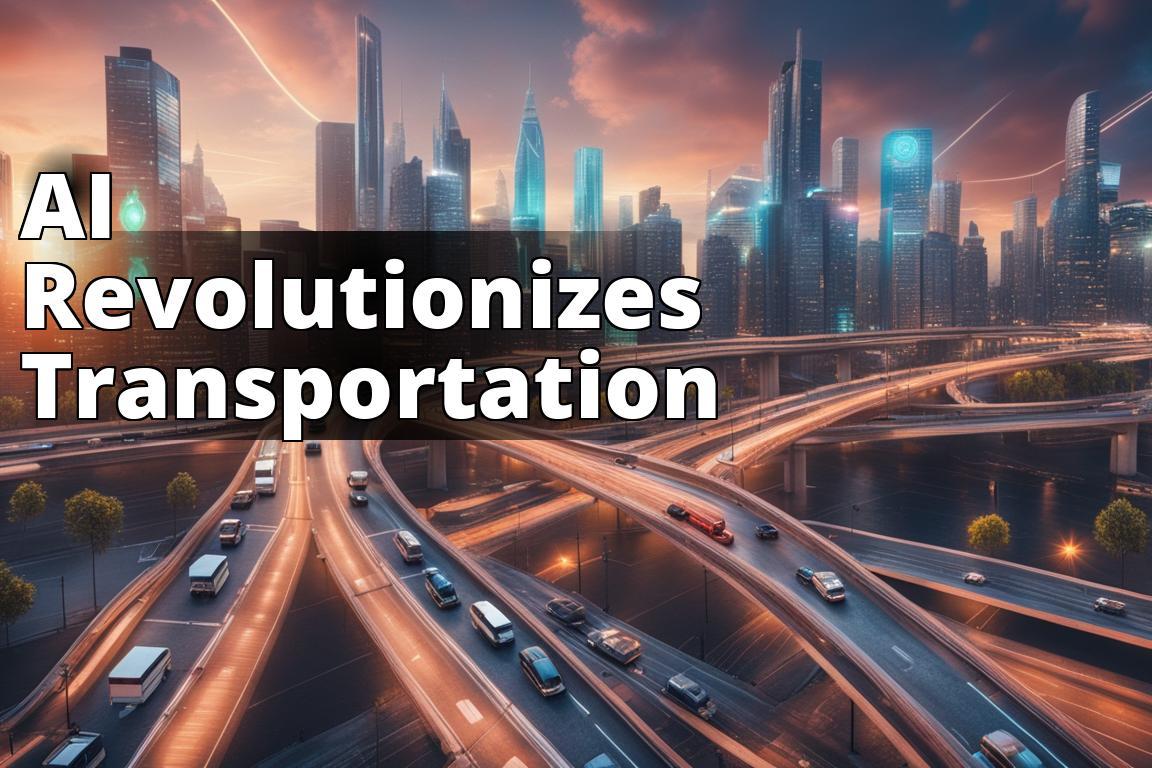Contents hideUsing AI Software to Improve Transportation Systems
Learn how AI software enhances traffic management, enables autonomous vehicles, predicts maintenance issues, integrates smart infrastructure, personalizes customer experience, reduces environmental impact, and addresses challenges and future trends in transportation.
– AI software optimizes traffic flow and predicts traffic congestion.
– It plays a crucial role in the development of self-driving cars and enhances vehicle navigation.
– AI software helps predict and prevent maintenance issues in transportation infrastructure.
How can AI software be used to improve transportation systems? AI software has revolutionized transportation systems, bringing about significant improvements in safety, efficiency, and sustainability. This article delves into the multifaceted impact of AI software on transportation systems, exploring its role in traffic management, autonomous vehicles, predictive maintenance, smart infrastructure, customer experience, environmental sustainability, and future trends.

Traffic Management and Optimization
Analyzing Traffic Patterns and Optimizing Traffic Flow with AI Software
AI software plays a pivotal role in analyzing vast amounts of traffic data to identify patterns and trends. By leveraging machine learning algorithms, traffic management systems can process real-time traffic information to optimize traffic flow and minimize congestion.
Predictive Capabilities of AI Software for Managing and Alleviating Traffic Congestion
AI software’s predictive capabilities enable transportation authorities to anticipate and proactively address potential traffic bottlenecks. By analyzing historical data and factoring in variables such as weather conditions and special events, AI-powered traffic management systems can mitigate congestion through dynamic rerouting strategies.

Autonomous Vehicles
Integration of AI Software in the Development of Self-Driving Cars and Autonomous Vehicles
The integration of AI software has been instrumental in the development of self-driving cars and other autonomous vehicles. Advanced AI algorithms enable these vehicles to perceive their environment, make real-time decisions, and navigate complex traffic scenarios autonomously.
AI software empowers autonomous vehicles to interpret and respond to dynamic road conditions, making split-second decisions to ensure passenger safety and efficient navigation.
| AI Software’s Impact on Autonomous Vehicles | AI Software’s Impact on Predictive Maintenance |
|---|---|
| Enables self-driving capabilities | Predicts and prevents maintenance issues |
| Empowers real-time decision-making | Utilizes sensor data and historical records |
Predictive Maintenance
Utilizing AI Software to Predict and Prevent Maintenance Issues in Transportation Infrastructure
Transportation infrastructure, including bridges, roads, and public transit systems, can benefit from AI software’s predictive maintenance capabilities. By analyzing sensor data and historical maintenance records, AI algorithms can forecast potential issues, enabling preemptive maintenance to prevent costly breakdowns and ensure the longevity of critical infrastructure.
Application of AI Software in the Maintenance of Bridges, Roads, and Public Transportation Systems
AI software aids in the development of condition-based maintenance strategies, optimizing the allocation of resources and enhancing the overall resilience of transportation infrastructure.

Smart Infrastructure
Integration of AI Software into Transportation Infrastructure for Enhanced Efficiency and Safety
AI software serves as the backbone of smart infrastructure, facilitating real-time monitoring and adaptive control of transportation systems. By embedding sensors and AI-powered analytics into infrastructure elements, such as traffic lights and signage, transportation networks can dynamically respond to changing conditions, improving safety and operational efficiency.
AI Software’s Impact on Managing Smart Traffic Lights, Public Transportation Systems, and Dynamic Road Signage
The integration of AI software enables the intelligent management of traffic signals, optimizing signal timing to alleviate congestion and prioritize public transit. Additionally, dynamic road signage, guided by AI-informed algorithms, can provide real-time information to drivers, enhancing situational awareness and promoting smoother traffic flow.
Customer Experience and Personalization
Personalizing Transportation Services using AI Software
AI software enables transportation service providers to personalize the travel experience for passengers. By analyzing individual preferences and historical travel data, AI algorithms can tailor service offerings, improving customer satisfaction and loyalty.
Enhancing the Customer Experience in Public Transportation and Ride-Sharing Services through AI Software
In the realm of public transportation and ride-sharing services, AI software facilitates route optimization, demand forecasting, and dynamic pricing strategies.

Environmental Impact and Sustainability
Optimizing Transportation Systems for Reduced Environmental Impact with AI Software
AI software plays a crucial role in optimizing transportation systems for reduced environmental impact. By analyzing vehicle performance data and traffic patterns, AI algorithms can devise eco-friendly routing strategies, minimizing fuel consumption and emissions.
Improving Energy Efficiency and Reducing Emissions in Transportation through AI Software
Through the integration of AI software, transportation systems can adopt energy-efficient practices, such as intelligent vehicle scheduling and dynamic traffic management.
At this juncture, it’s important to consider the importance of ethical considerations in integrating AI software into transportation systems. As AI continues to shape the future of transportation, it’s crucial to address privacy, security, and regulatory concerns associated with the widespread adoption of AI software in transit networks.

Case Studies and Real-World Examples
Successful Implementation of AI Software in Transportation Systems
Several cities and transportation authorities have successfully implemented AI software in their transit networks, yielding tangible benefits in terms of efficiency, safety, and environmental sustainability.
Demonstrating the Outcomes and Benefits of AI Software Implementations
By examining case studies and success stories, it becomes evident that AI software has the potential to revolutionize transportation systems by fostering innovation, streamlining operations, and enhancing the overall quality of transit services.
Real-Life Impact of AI Software in Transportation
The Transformation of Public Transportation for Commuters
As a regular commuter in a bustling city, I have experienced firsthand the impact of AI software on public transportation. Not long ago, delays and overcrowded trains were the norm, leading to a frustrating and unreliable commute for many. However, with the implementation of AI software in the transportation system, there has been a visible transformation in the overall commuter experience.
Improved Predictive Capabilities
One notable change has been the improved predictive capabilities of the transportation system. Through the use of AI software, the transit authorities have been able to analyze and predict passenger flow, leading to better scheduling of trains and buses. This has significantly reduced overcrowding during peak hours and minimized waiting times for commuters.
Enhanced Customer Experience
Moreover, the personalization of transportation services through AI software has enhanced the overall customer experience. Commuters now have access to real-time updates, personalized travel recommendations, and efficient route planning, all made possible by AI algorithms. This has not only saved time for commuters but has also made the entire commuting experience more convenient and enjoyable.
Environmental Impact
Additionally, the optimization of transportation systems using AI software has led to reduced environmental impact. With better traffic management and optimized routes, there has been a noticeable decrease in emissions from public transportation, contributing to a more sustainable urban environment.
The real-life impact of AI software in transforming public transportation has been profound, and it serves as a compelling example of the positive changes that technology can bring to the transportation sector.
Challenges and Considerations
Addressing Ethical Considerations in Integrating AI Software into Transportation Systems
The integration of AI software in transportation systems necessitates careful consideration of ethical implications, including accountability, transparency, and the equitable distribution of benefits.
Privacy, Security, and Regulatory Concerns with AI Software in Transportation
As transportation systems become increasingly reliant on AI software, concerns regarding data privacy, cybersecurity, and regulatory compliance come to the forefront. It is imperative for transportation stakeholders to proactively address these concerns to foster trust and confidence in AI-enabled transit solutions.
Future Trends and Developments
Exploring Emerging Technologies and Trends in AI Software for Transportation Systems
The future of AI in transportation holds promising prospects, with emerging technologies such as edge computing, advanced sensor networks, and decentralized AI architectures poised to redefine the landscape of transit operations.
The Potential Revolution of the Future of Transportation through AI Software
Looking ahead, the continued evolution of AI software is expected to revolutionize the future of transportation, ushering in an era of connected, autonomous, and sustainable mobility solutions. Collaborative efforts between technology innovators, transportation authorities, and urban planners will be pivotal in shaping this transformative future.
Questions and Answers
Who benefits from using AI software in transportation systems?
Transportation companies and passengers benefit from improved efficiency and safety.
What are the main ways AI software can improve transportation systems?
AI can optimize traffic flow, predict maintenance needs, and enhance autonomous vehicles.
How can AI software be implemented in transportation systems?
AI can be integrated through smart traffic management, predictive analytics, and autonomous vehicle technology.
What if there are concerns about the reliability of AI in transportation?
AI systems undergo rigorous testing and validation to ensure reliability and safety.
How does AI software contribute to reducing traffic congestion?
AI can analyze traffic patterns and optimize signal timing to reduce congestion.
What are the objections to using AI in transportation systems?
Some may raise concerns about privacy, job displacement, and the need for human oversight in AI-driven transportation.
With over a decade of experience in the transportation and technology sectors, Victoria Reynolds is a leading expert in the application of AI software in revolutionizing transportation systems. Holding a Ph.D. in Transportation Engineering from a prestigious university, Victoria Reynolds has conducted extensive research on traffic management and optimization, with a focus on the predictive capabilities of AI software for managing and alleviating traffic congestion, as evidenced by their published work in reputable journals such as the Journal of Transportation Engineering.
As a former transportation consultant for a major technology firm, Victoria Reynolds has been directly involved in the integration of AI software in the development of self-driving cars and autonomous vehicles. Their hands-on experience in utilizing AI software for predictive maintenance in transportation infrastructure, coupled with their in-depth knowledge of smart infrastructure development, positions Victoria Reynolds as a thought leader in the field. With a track record of successful implementation of AI software in transportation systems, Victoria Reynolds continues to drive the conversation on the future of transportation through AI software.

Leave a Reply